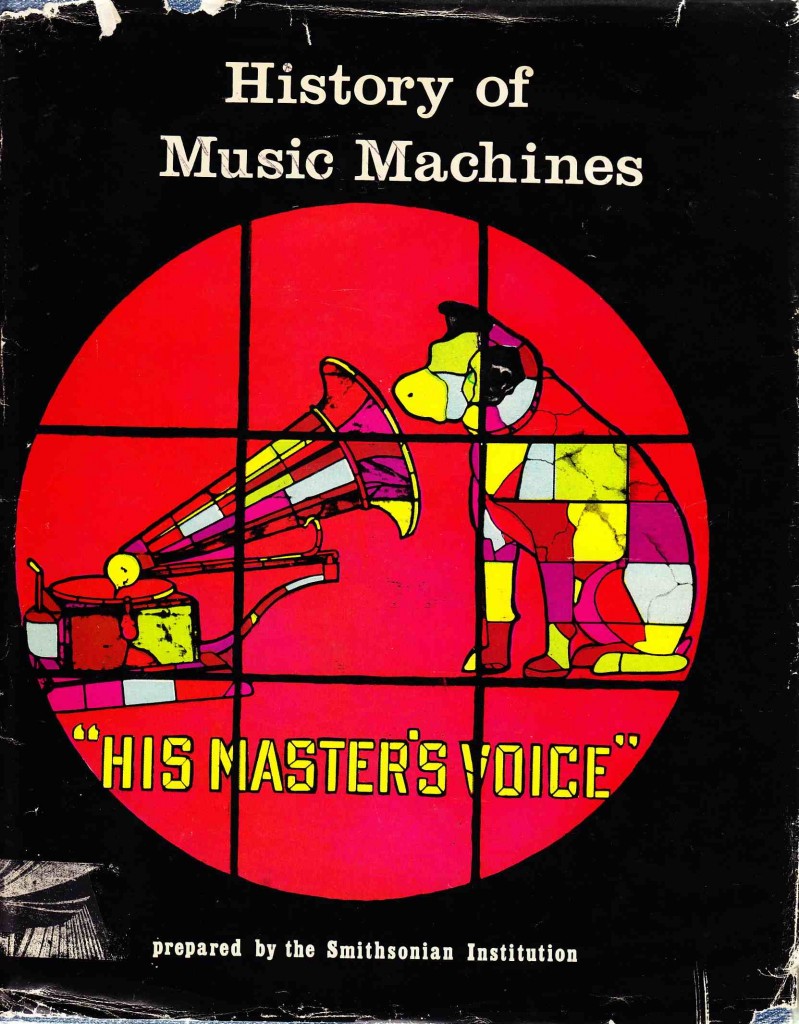 Came across this obscure volume in a rubbish bin several years ago. Published by Drake Publishers in 1975 and billed as being ‘Prepared By The Smithsonian’ (No author attributed), “(The)History Of Music Machines” (hf. ‘HOMM’) is a b&w hardcover gift/coffee-table book which presents a fairly interesting survey of the history of reproduced sound. Several copies are available for just a few bucks at amazon. 139pp.
Came across this obscure volume in a rubbish bin several years ago. Published by Drake Publishers in 1975 and billed as being ‘Prepared By The Smithsonian’ (No author attributed), “(The)History Of Music Machines” (hf. ‘HOMM’) is a b&w hardcover gift/coffee-table book which presents a fairly interesting survey of the history of reproduced sound. Several copies are available for just a few bucks at amazon. 139pp.
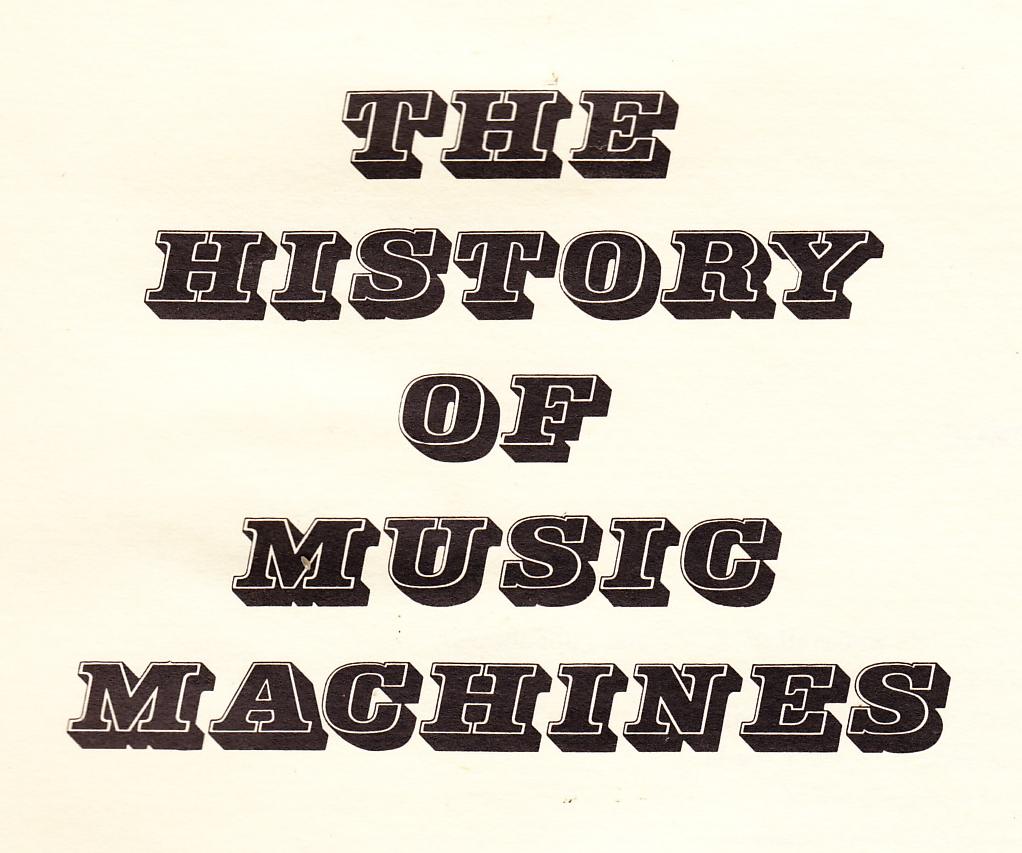 From the introduction (by writer Irving Kolodin):
From the introduction (by writer Irving Kolodin):
“Over the years, the debates have continued about the pros and cons of music machines, the impact of their existence on the habit patterns of society,…. their influence for good and evil on taste… As for taste, it has been driven to the wall, and all but through it, by exploitation of the music machines’ potential for serving the lowest common denominator. Whether in records, or in radio’s reliance on the Top Forty -those loudest, hardest, often cheapest appeals to the beetle-browed- selectivity has since foundered on the rock of commercialism.”
Jesus Irving. Don’t mince words buddy. Tell us how you really feel. Note how he allusively slips ‘Be(e/a)tle’ and ‘Rock’ in there. Nice one. ANYhow. Reactionary sentiments asides, HOMM is basically a chronological series of photos with explanatory captions. I find it interesting because it does not attempt to parse recording devices, electric instuments, synthesizers, amplification equipment, choosing instead to include all of these very different (in my mind, at least) type of equipment into the totality of ‘music machines.’ This suggests the view point that music is either made ‘by man alone’ or somehow made ‘by machine.’ It’s an interesting idea. A very outmoded binary opposition, certainly. Here are some highlights.
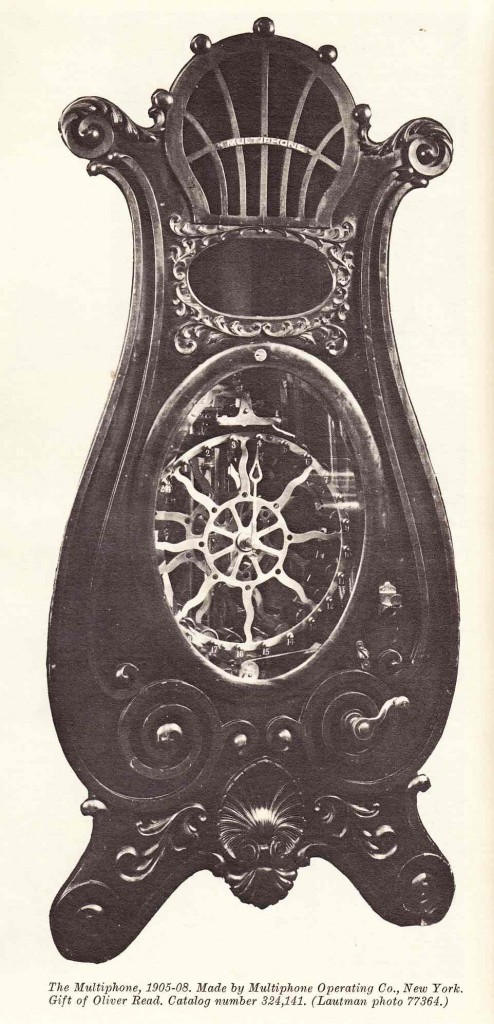 The multiphone, a wax-cylinder jukebox from 1905.
The multiphone, a wax-cylinder jukebox from 1905.
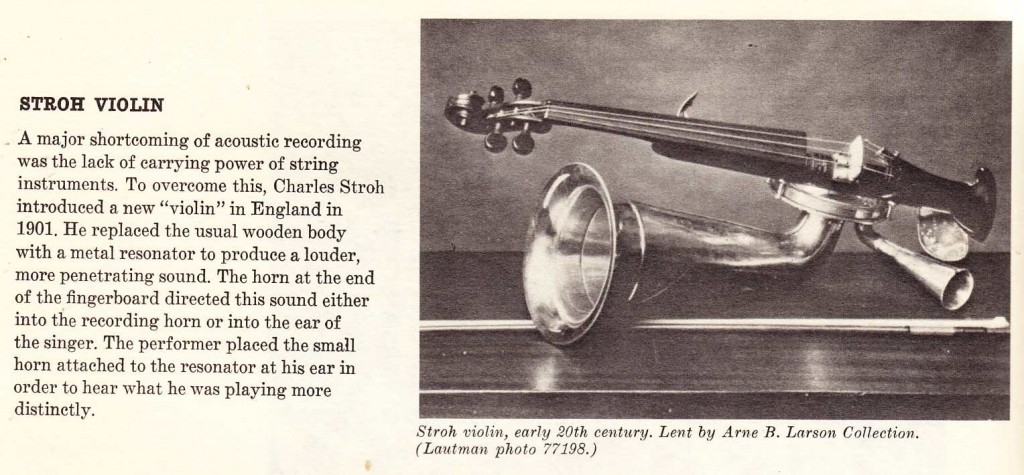 The Stroh Violin. DS mentioned last week that he had seen a band in NYC recently that performs exclusively 1900-1930 music on all period instruments. ‘One of those Violins with the victrola horn’ is apparently employed. Now we know that this is called a Stroh Violin.
The Stroh Violin. DS mentioned last week that he had seen a band in NYC recently that performs exclusively 1900-1930 music on all period instruments. ‘One of those Violins with the victrola horn’ is apparently employed. Now we know that this is called a Stroh Violin.
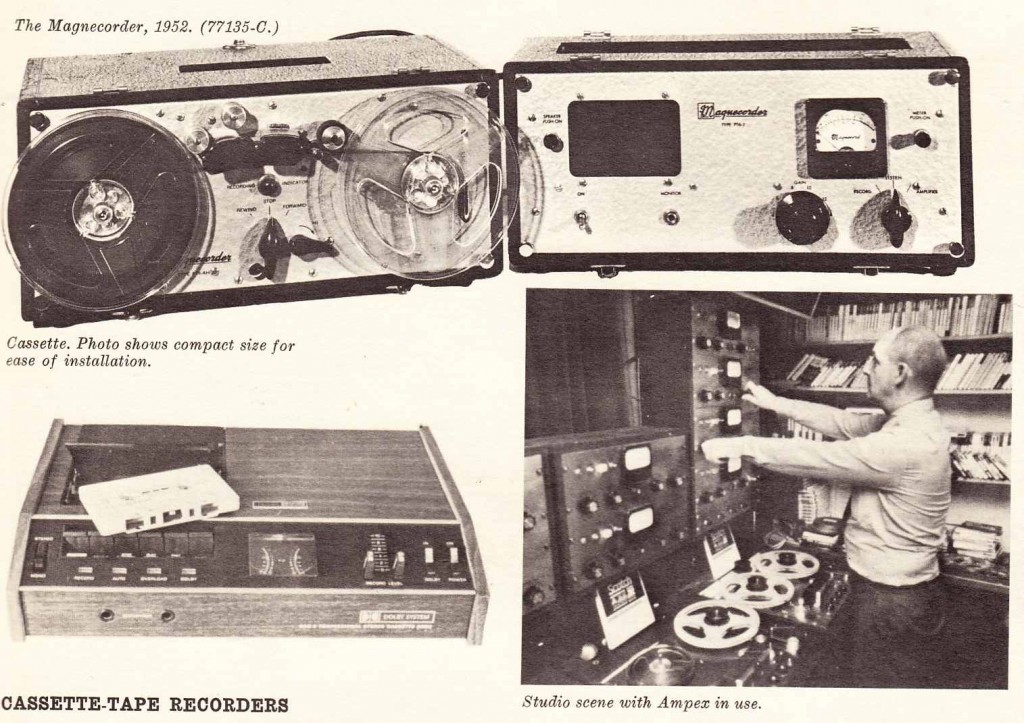 The much-loved Magnecord PT6 gets some praise.
The much-loved Magnecord PT6 gets some praise.
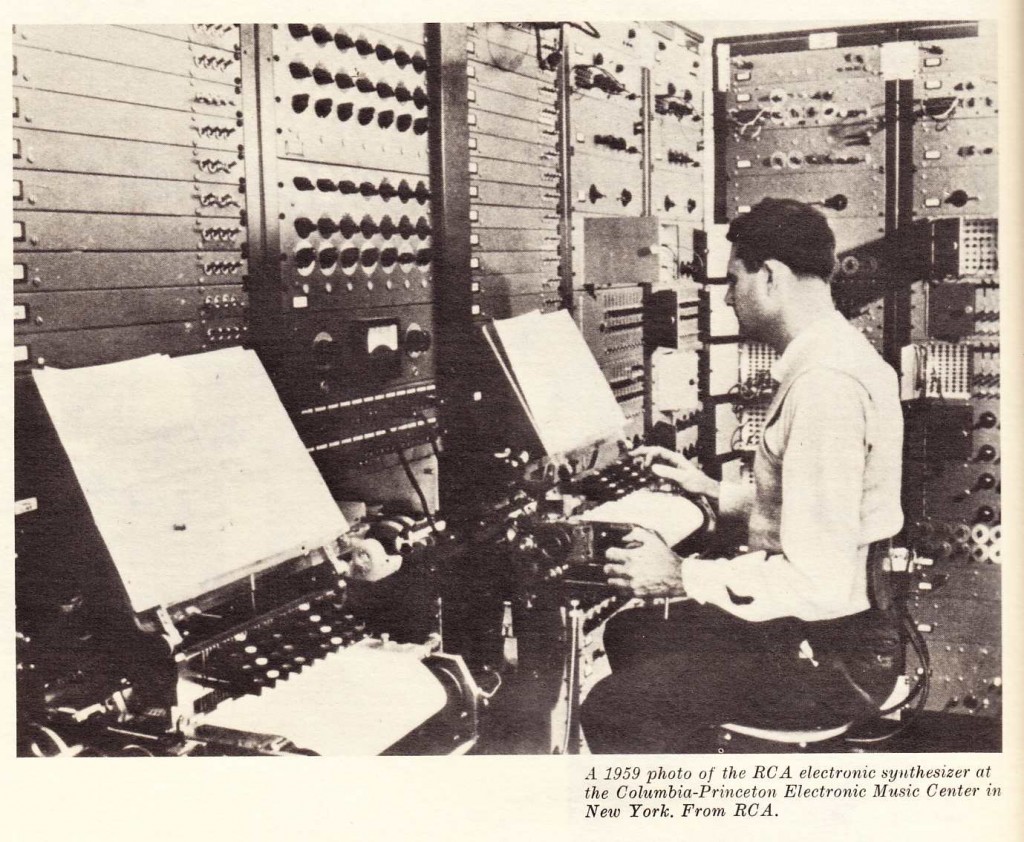 HOMM ends with some (even then very-dated) images of Electronic Music Studios. Above we have the Columbia-Princeton Studio circa 1959 (see my previous post) and below some rare images of the circa ’65 studios at the Catholic University of America.
HOMM ends with some (even then very-dated) images of Electronic Music Studios. Above we have the Columbia-Princeton Studio circa 1959 (see my previous post) and below some rare images of the circa ’65 studios at the Catholic University of America.
(footnote: a nod to EKL, originator of the ‘out-of-print-book-report’ in her PARFAIT series)
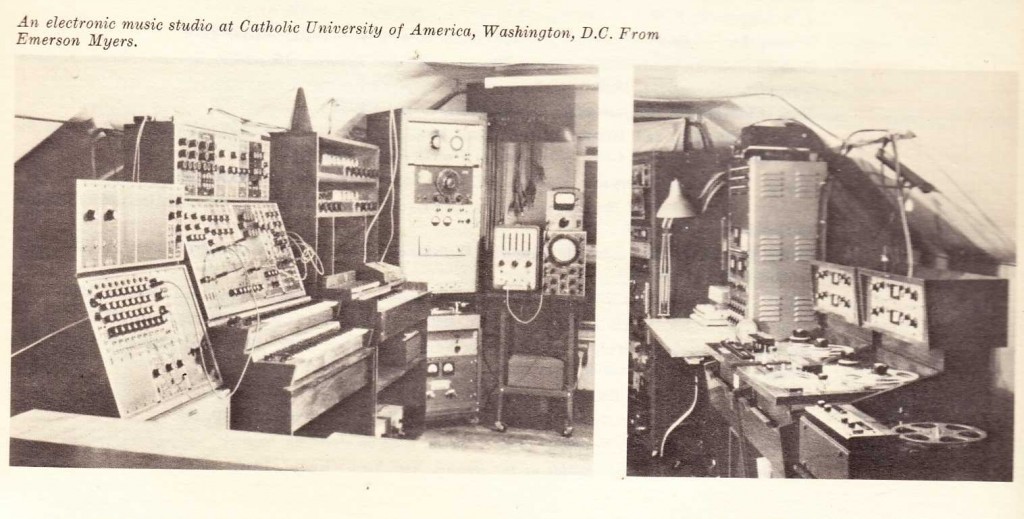
2 replies on “Out-Of-Print-Book Report: History Of Music Machines (Smithsonian)”
I saw this at the Smithsonian in 1970 and they had quite a collection on display. I do remember them having an Ampex AG440 on display, a machine that was still in production back than and used in many studios.
The editor was Cintha A. Hoover. I did a historical research paper on this volume.